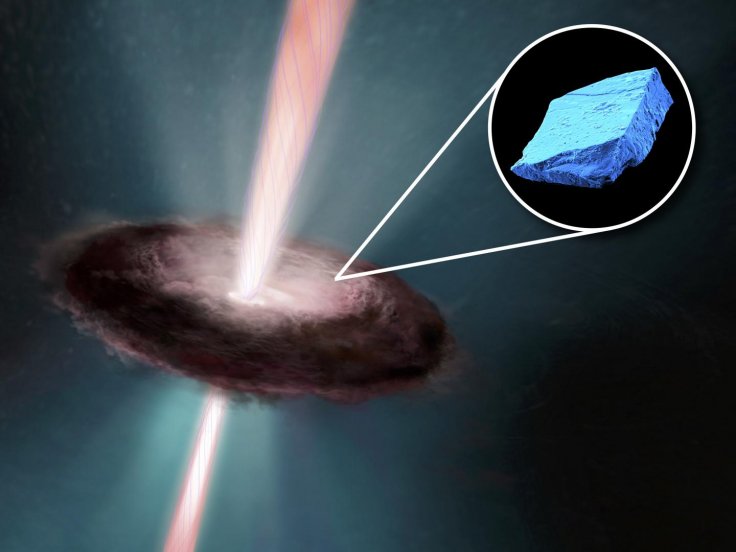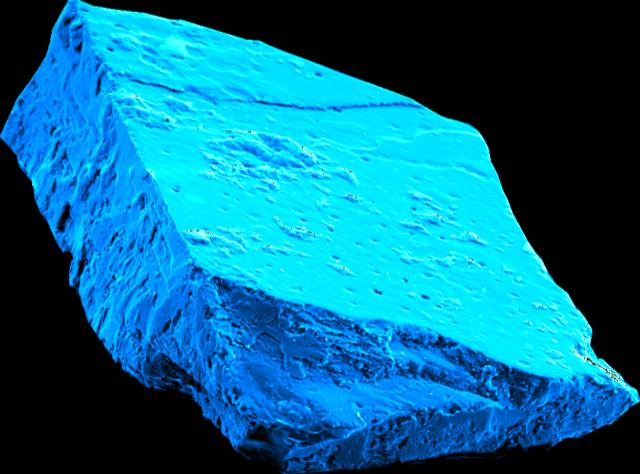
Millions of years ago, before the formation of Earth, the brightest star of the solar system, Sun was created and since it is older than the blue planet, there are several mysterious facts, which is still out of the reach. But now scientists have found ancient blue crystals trapped in meteorites that revealed many unknown characteristics of the early version of earth's energy source.
The study was published in Nature Astronomy, with a title "High early solar activity inferred from helium and neon excesses in the oldest meteorite inclusions." The author of this research, Philipp Heck, who is also a curator at the Field Museum as well as a professor at the University of Chicago, said, "The Sun was very active in its early life—it had more eruptions and gave off a more intense stream of charged particles."
"Almost nothing in the Solar System is old enough to really confirm the early Sun's activity, but these minerals from meteorites in the Field Museum's collections are old enough. They're probably the first minerals that formed in the Solar System," he added.
Heck and his colleagues analysed the minerals, which are microscopic ice-blue crystals called hibonite. They also looked into the composition of the crystal that bears earmarks of chemical reactions and as per the scientists, such composition would have only occurred if the early sun had released lots of energetic particles.
In addition, the lead author Levke Kööp, who is a post-doc from the University of Chicago and an affiliate of the Field Museum said that these crystals have formed over "4.5 billion years ago and preserve a record of some of the first events that took place in our Solar System. And even though they are so small—many are less than 100 microns across—they were still able to retain these highly volatile nobles gases that were produced through irradiation from the young Sun such a long time ago."
The new study has also stated that during the early days, before the existence of the planets, the solar system only had this sun, which was surrounded by a massive disk of gas and dust. The region by the sun was really hot, more than 1,500 C, or 2,700 F.
We know that the hottest planet in the solar system is Venus, which has the hottest surface that is capable of melting lead but compared to the early scene of the sun, the temperature is extremely low and that is 872 F.

Researchers said in the study that when the disk of gas and dust cooled down, the earliest minerals started to form those blue hibonite crystals, which contains elements like calcium and aluminium. Andy Davis, another co-author, who also affiliated with the Field Museum and the University of Chicago added, "The larger mineral grains from ancient meteorites are only a few times the diameter of a human hair. When we look at a pile of these grains under a microscope, the hibonite grains stand out little light blue crystals—they're quite beautiful."
The study claimed that during the formation of the crystals, the sun continued to release protons and other subatomic particles out into space and some of these particles hit these blue hibonite crystals. After the particles hit those calcium and aluminium atoms in the crystals, the atoms split into two smaller atoms called neon and helium. Both of these micro atoms were trapped inside the crystals for billions of years. When the space rocks included these crystals and fell to earth as meteorites, researchers started their study to find what the early Sun was like.
Even though they did not find the evidence of mysterious of the early active sun from the meteorites before, Kööp noted that if previous researchers did not find anything, "that doesn't mean it wasn't there, it might mean they just didn't have sensitive enough instruments to find it."
Later the research team analysed the crystals by using a mass spectrometer that had an attached laser, which melted a tiny grain of hibonite crystal from a meteorite. They detected that the crystal was releasing trapped helium and neon and then as per the Kööp they got a huge signal that was clearly "showing the presence of helium and neon—it was amazing."
Heck said, "It'd be like if you only knew someone as a calm adult—you'd have reason to believe they were once an active child, but no proof. But if you could go up into their attic and find their old broken toys and books with the pages torn out, it'd be evidence that the person was once a high-energy toddler."









